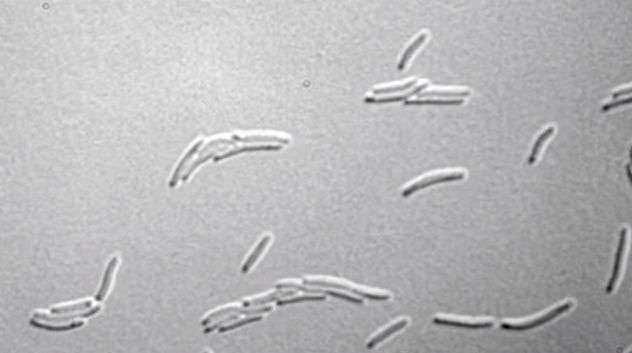Pause to read the traffic sign: Regulation of DNA transcription in bacteria

The survival of the cell is—apart from other important aspects—a question of timing: Scientists of Goethe University together with colleagues from other universities have now identified the different parts of this mechanism and introduced a model of the process.
One of the central tenets of biology is that information flows from DNA to RNA in order to encode proteins, which function in the cell. Arguably just as critical as the genetic code is the timing of this information flow. By producing the right RNA and right proteins at the right time, a cell can effectively strategize its survival and success. One such regulatory element, the riboswitch, has excited interest as a potential target for antibiotics. After over 10 years of research, Prof. Harald Schwalbe's research group at the Goethe University, in collaboration with the Landick group at the University of Wisconsin, Prof. Jens Wöhnert from Goethe-University's Biology Department and the Süß group at the Technische Universität Darmstadt, has put together the puzzle pieces of a riboswitch-based regulatory process in the bacterium Bacillus subtilis, presenting the most extensive model of the timing of riboswitch action to date.
A riboswitch is a short piece of RNA that can fold into different structures, depending on whether or not a small messenger molecule is binds to it. In transcriptional riboswitches, these different structures signal the nearby RNA polymerase to continue producing RNA or to stop. In their recent publication in ELife, the Schwalbe group and their collaborators released molecular structures of the xpt-pbuX riboswitch in the off-position after synthesis and in the on-position upon binding by the small messenger molecule guanine. They also demonstrated that this switch to the on-position takes a certain amount of time. This sets a certain requirement on this regulatory process.
As RNA polymerase flies along a DNA strand, producing the corresponding RNA, it reaches the code for the xpt-pbuX switch, makes the riboswitch, and continues on. If guanine is not around, the RNA polymerase would detect the default off-position and halt synthesis. However, if guanine were to bind the riboswitch, the riboswitch would need to refold into the on-position, and RNA polymerase would have to wait long enough to detect the new conformation. Otherwise, it would always read "off", and that gene would never be read. Schwalbe and coworkers found that just such a pause does exist, and it's encoded into the DNA. After producing the xpt-pbuX switch, the RNA polymerase encounters this "pause site" on the DNA code and slows down, allowing the right amount of time for the riboswitch to refold.
More information: Hannah Steinert et al. Pausing guides RNA folding to populate transiently stable RNA structures for riboswitch-based transcription regulation, eLife (2017). DOI: 10.7554/eLife.21297
Journal information: eLife
Provided by Goethe University Frankfurt am Main















